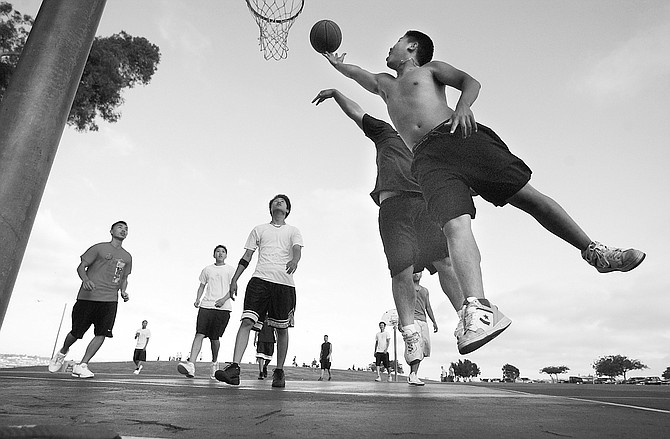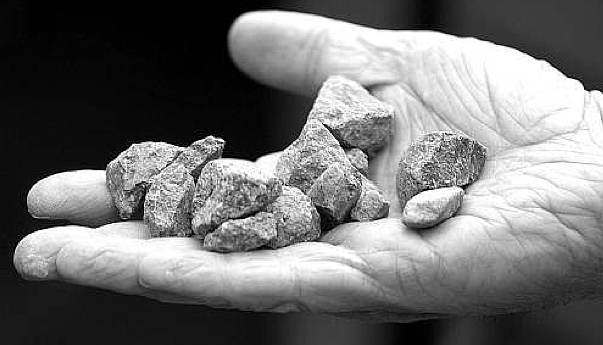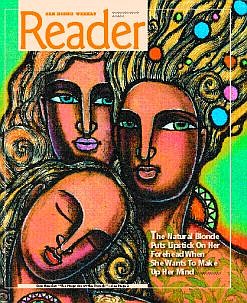
Photo by Sandy Huffaker, Jr.
My first month or two in San Diego, I played outdoor pickup, on the beach, because, yo, I could, right?
Geoff Bouvier's first book, Living Room, (Copper Canyon Press), was selected by Heather McHugh as the winner of the 2005 APR/Honickman Prize. His writings have appeared in American Poetry Review, Barrow Street, Boston Review, Denver Quarterly, jubilat, New American Writing, Western Humanities Review, and VOLT. Bouvier received an MFA from Bard College's Milton Avery Graduate School of the Arts in 1997.
He was appointed as the 2009 Roberta C. Holloway Lecturer at the University of California-Berkeley.
He wrote feature stories for the Reader from 2003 through 2009.
Editor's picks of Bouvier's stories he wrote for the Reader:
- This old court’s seen a veritable who’s who of Southern California basketball players over the years. Swen Nater, who was a forward for the San Diego Clippers in the ’70s; all of Bill Walton’s kids; Jelani McCoy; Sean Rooks; Michael Cage; Mark Jackson; and a lot of NFL and ex-NFL players: Craig Whelihan, Steve Grogan, Freddie Jones, and Tony Banks. And nowadays you’ll be likely to run against Doug Flutie as well. Flutie’s pretty good too. (Nov. 7, 2003)
- I then ask my sister if she prefers blonds, blond men. “No way. There’s this blond guy who lives in my building whose hair, eyes, and skin are all exactly the same color. It’s like this champagne-beige. He has almost no outstanding features at all. So I think true blondes lack contrast. And I think that’s why men like them. Men don’t like assertive things." (May 6, 2004)

Mike Westlake
- "A suit's comfortable if it doesn't fall off, doesn't pinch, doesn't bunch. Also, you want a suit that can protect you from getting board rash if you're a surfer, and you want a suit where the sand isn't so much of an issue if you're playing volleyball. I'd rather be in a bathing suit than a suit. But I'm a city planner, so I wear a suit to work all day. If I could wear a bathing suit instead, then I'd be happy." (July 1, 2004)
- For breakfast in the Grant Hotel dining room, one might come down the wide carpeted stairs and order Stewed Prunes, Fried Cornmeal Mush, Sauerkraut Juice, Milk Toast, Shirred Eggs with Chicken Livers, Little Pig Sausage, Boiled Salt Mackerel, and then, at the end of this repast, Ovaltine, Postum, or a nice mug of Half and Half. The most expensive breakfast item, a Breakfast Filet Mignon, cost 75 cents. (Nov. 24, 2004)
- "America is a country of a lot of opportunities," he said. "It is really a free country. You know, everybody asks me why I came to America, and I say, 'Because I like to work.' And you know, that's the point. I don't care about having a lot of free time. I like to work. I like to do things and be active. But it's impossible in France. They have that socialist system, everything is free, so it doesn't do a lot of good to work." (Jan. 26, 2006)

Deméré wanted to show me "samples of some of the oldest rock in the county." It's called Julian Schist. Geologists estimate the stuff to be as much as 400 million years old. Along Route 78, up Banner Grade, at an elusive spot, Deméré found what he was looking for.
- There's a rock quarry off Friars, at the end of Qualcomm Way, where they mine Stadium Conglomerate. It's one of just a few quarries in San Diego. At the quarry in Mission Valley, they're digging up stones brought into this area by an ancient river that essentially made a huge cobble delta 38 to 50 million years ago. Now the remnants of that delta are being used as aggregate in roadbeds and asphalt. (Jan. 13, 2005)

Michael Stepner: "You don't want buildings that are separated by parking lots."
- San Diego's high-rise history began in 1909 with the 155-foot Broadway Lofts building on Fifth and Broadway. The El Cortez Hotel, in 1927, was the first local building to top 300 feet. The El Cortez was the highest in town for over 30 years and was in the top 5 until the high-rise boom finally developed here in the 1980s. Now 21 downtown buildings are officially higher than the El, with dozens more soon to follow. (Aug. 24, 2006)
- Mateo's lived in San Diego for the past nine years. For most of that time, he's wired money to his family back home. Mateo estimates that he sends about half of what he earns back to Guatemala. By now, in the rural southwestern part of that country, this young man owns 140 acres of fertile grazing land, three houses, two bakeries, an apiary, and 78 head of prime beef Brahman cattle, all of which he purchased with money from busing tables. (Sept. 14, 2006)

Canyon Sin Nombre. "We're going in there," Schad said excitedly, indicating an opening between two rock faces, and then we parked.
- Jerry Schad fell for the beauty of the desert when he went camping in Anza-Borrego with friends from grad school. "It happened to be one of those years with just enough rainfall," he said. "And the place was exploding in wildflowers. Entire slopes filled with desert poppies. But what clinched it for me on that first trip was this. We came around the corner, and this is on the Borrego Palm Canyon Nature Trail, and right in the crease of the canyon up ahead was all this bright green color. And I realized they were palm trees." (March 15, 2007)
- Maybe 150 people work the mailroom this Thursday morning. But I can't see more than 2 or 3 of them at a time. And no one is sweating or yelling or rushing around frantic or anything. No one is even speaking, except for Cleveland and Ferguson-Costa. Otherwise, all you can hear is that overlying calming thrum. Down the long rows of machinery, along every sight line under the hanging lights and high ceiling, it's orderly, slow, easy, despite 900,000 pieces of mail proceeding rapidly past me. (Feb. 1, 2007)
- "It's very different between here and Michigan. In San Diego, being a tourist town, most people get to pretend that they're not going through the nitty-gritty aspects of life. In Michigan, in general, you're talking about people who are socially and economically a little further down the ladder, and those types of people are more keen to look right into your eyes. They are accustomed to dealing with a more contrasting situation, and that gives them greater character.(April 5, 2007)
- “And then I got into a gang, the Deep Valley Bloods,” he says in a tone that implies he knows how stupid that decision was. “I was about 13 or 14. And me and my other friend, I’m not going to say his name, but we were the youngest out of the whole crowd. The jump-ins were crazy. On Arthur Street, we used to make two lines. And you’d have to run down the middle." (Feb. 22, 2008)
 Facebook
Facebook
 X
X
 Instagram
Instagram
 TikTok
TikTok
 Youtube
Youtube














